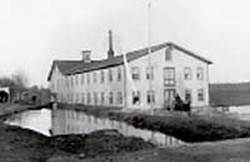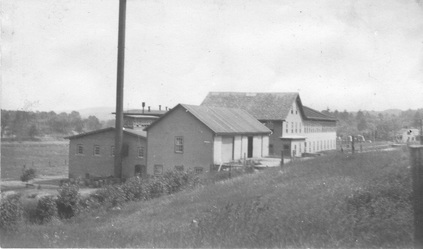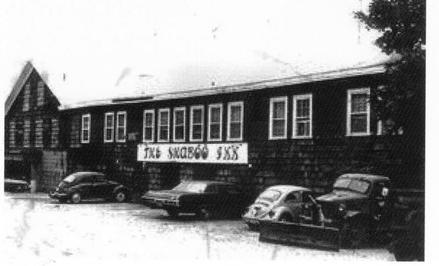CONANTVILLE MILL, Behind East Brook Mall, Mansfield
 Early Mill Photo
Early Mill Photo
Waterway: Saw Mill River
Water Power: Standard Wheel
Mill type: Silk, thread
Location: Latitude 41 49 31 N and Longitude 72 18 45 W
Water Power: Standard Wheel
Mill type: Silk, thread
Location: Latitude 41 49 31 N and Longitude 72 18 45 W
History – The mill was established in 1852 when Joseph Conant built a small silk mill and dye house in Co. The mill like most mills of the day had many operators and financial failures. Charles L. Bottum along with, W. E. Williams and D. P. Conant purchased the mill in 1856 doubling in size in 1869. It then passed through a number of hands including: leasing to William W. Williams, a Gurleyville silk manufacturer; the Natchaug Silk Co. in 1894; and the Max Pollack Company in 1901. Max Pollack & Company converted the mill to produce cotton thread and moved the silk operations to Groton, CT. Pollack operated the mill until the 1940s.
It was used for several commercial purposes after the mill closed. It was last operated as the Shaboo Inn, featuring music and drink, until it closed in May, 1982. Its final demise was in August, 1982 when it was destroyed by fire.
Site Characteristics: Any clues to the configuration of the mill site have been destroyed due to the construction of the East Brook Mall. While it was difficult to reconstruct the configurations of the site, pictures, historic maps, and topographic features offered some clues. The mill was most likely an off-stream mill. A standard wheel of the of an undershot or breastshot type would work as would a turbine. There would have been a small holding pond with penstock above the elevation of the river in proximity to the mill which would have required a long sluice or head race.
It was used for several commercial purposes after the mill closed. It was last operated as the Shaboo Inn, featuring music and drink, until it closed in May, 1982. Its final demise was in August, 1982 when it was destroyed by fire.
Site Characteristics: Any clues to the configuration of the mill site have been destroyed due to the construction of the East Brook Mall. While it was difficult to reconstruct the configurations of the site, pictures, historic maps, and topographic features offered some clues. The mill was most likely an off-stream mill. A standard wheel of the of an undershot or breastshot type would work as would a turbine. There would have been a small holding pond with penstock above the elevation of the river in proximity to the mill which would have required a long sluice or head race.



